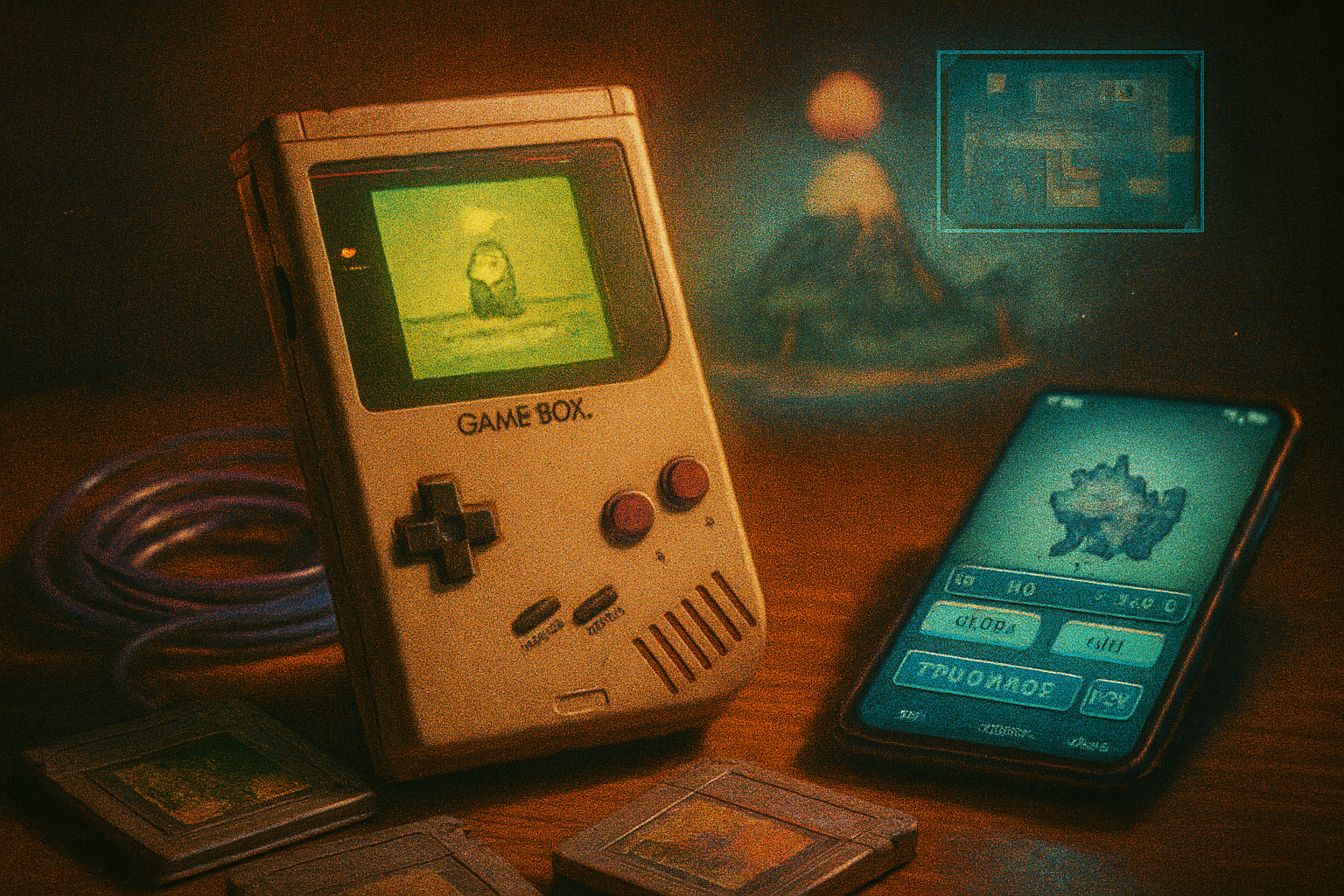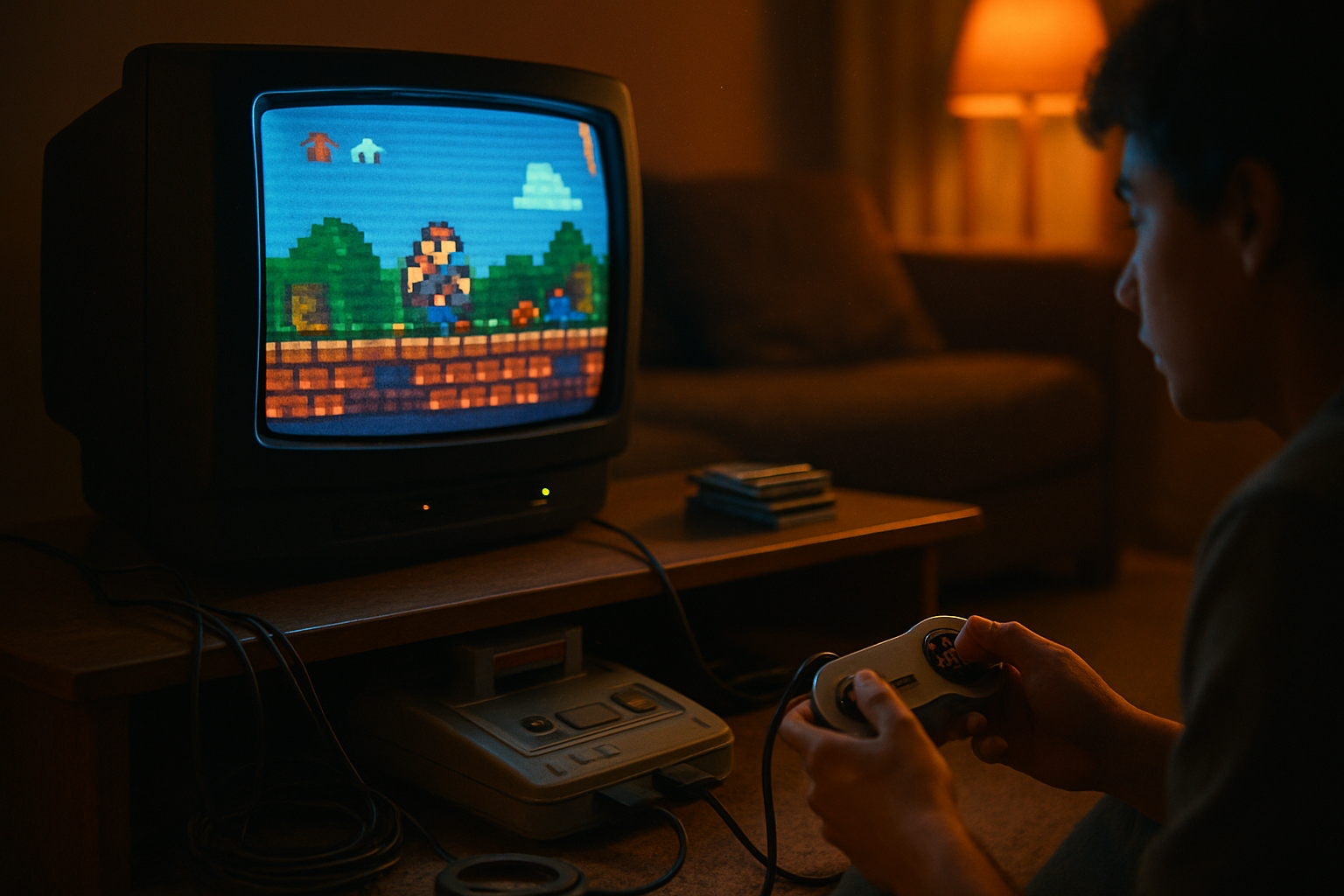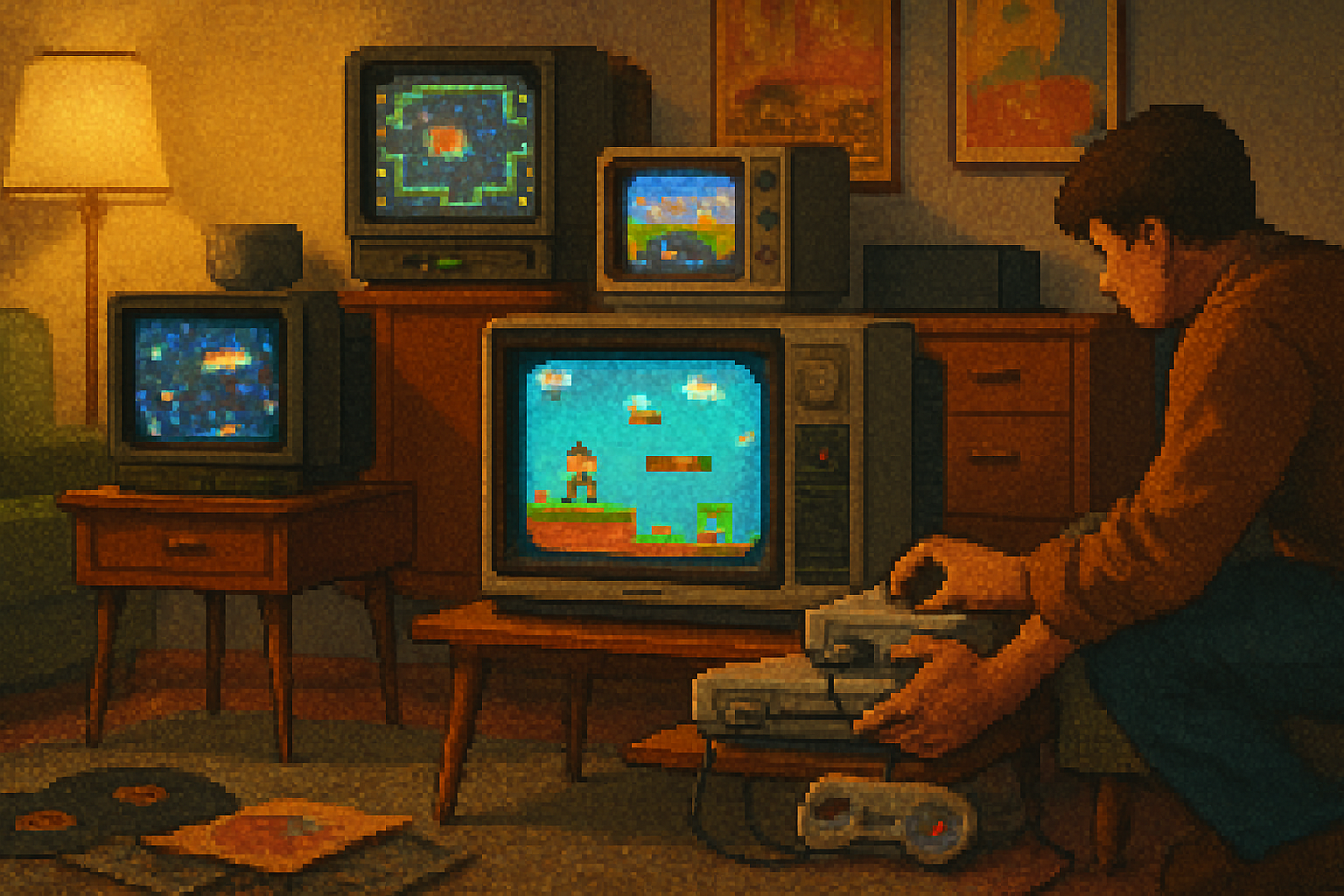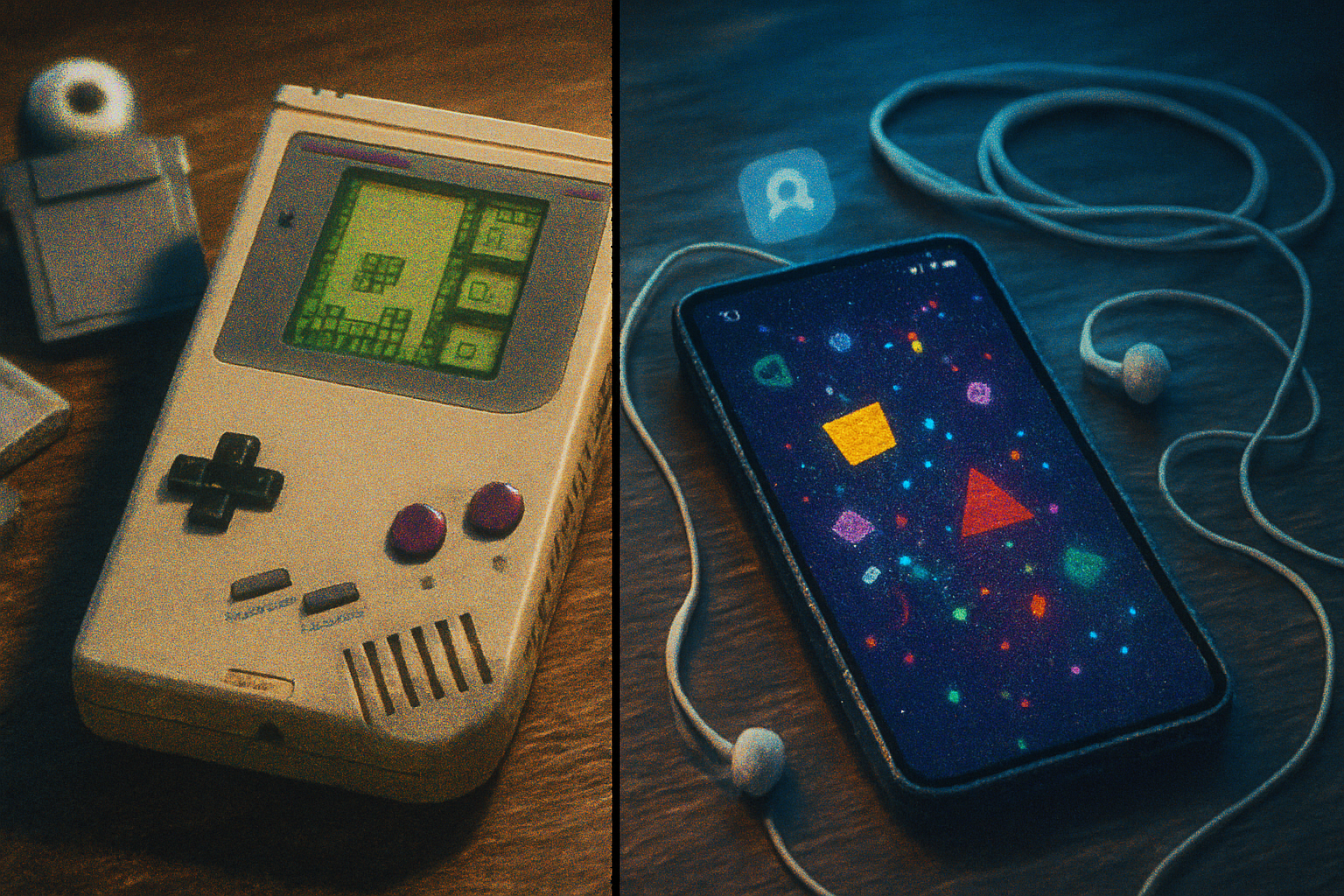· culture · 6 min read
The Lost Art of 8-Bit Gaming: How Tiger Electronics Shaped Our Childhood
A nostalgic deep-dive into Tiger Electronics’ cheap, brilliant LCD handhelds - how their design constraints shaped play, spread licensed gaming to a generation, and anticipated modern mobile gaming’s habits.
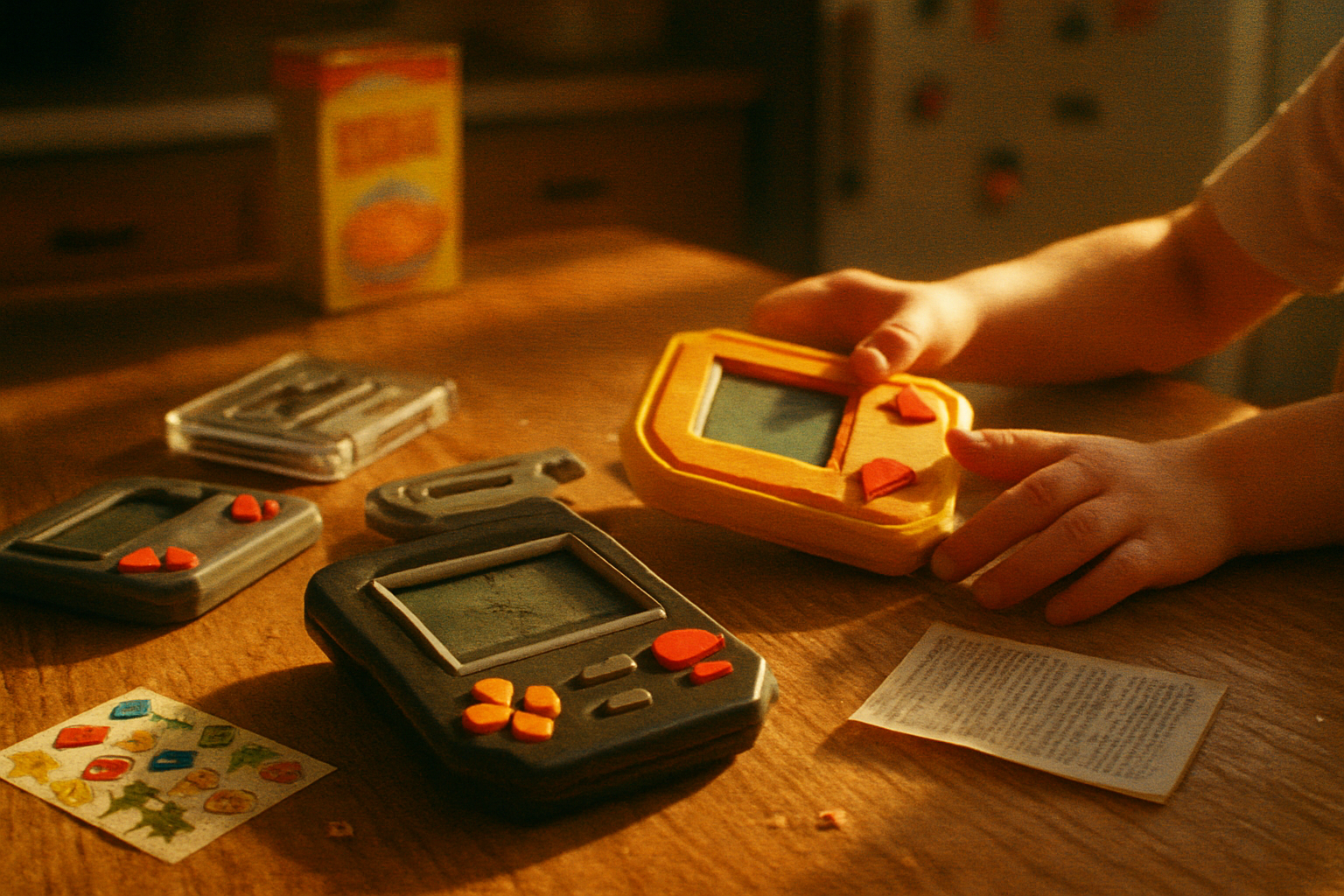
The Lost Art of 8‑Bit Gaming: How Tiger Electronics Shaped Our Childhood
There’s a peculiar kind of nostalgia reserved for the cheap, plastic handhelds of the 1990s: small, often garish devices with monochrome LCD screens that moved fixed sprites across the screen like paper cutouts. They were flawed, repetitive, and impossibly fun for the bedtime, car‑ride, and grocery‑store moments that made up so much of childhood play. Those devices were, for many of us, made by Tiger Electronics - a company that turned limitations into personality and, in the process, helped frame how we think about portable play today.
Below I explore who Tiger was, what made their handhelds tick, why they mattered culturally, how their experiments foreshadowed mobile gaming, and what their legacy looks like now.
What were Tiger Electronics’ handhelds?
Tiger specialized in simple, affordable handheld electronic games that used segmented LCD displays. Unlike cartridge systems (Nintendo’s Game Boy, for example), these devices came with a single fixed game whose on‑screen characters were predefined segments on the LCD. When activated, the segments either appeared or disappeared, creating the illusion of motion.
These games were often:
- Licensed - based on movies, TV shows, sports teams, and popular characters.
- Focused on bite‑sized play sessions - goals were easy to explain and short to complete.
- Extremely affordable - priced for mass toy markets and casual buyers.
You can read a concise overview of the company and its products on the Tiger Electronics page on Wikipedia: https://en.wikipedia.org/wiki/Tiger_Electronics and the broader context of handheld electronic games here: https://en.wikipedia.org/wiki/Handheld_electronic_game
Design by constraint: why the hardware mattered
The charm of Tiger handhelds came from constraint. The hardware offered a single screen layout of static shapes - there was no full pixel addressability, no scrolling backgrounds, and only a few distinct sound tones. Designers worked within these limits and leaned into them.
Key constraints and creative responses:
- Fixed sprites - Gameplay had to be expressed as combinations and timing of on/off segments. That produced crystal‑clear, iconic silhouettes and simple, immediate mechanics.
- Minimal inputs - Usually 2–4 buttons. Designers had to craft depth from attack patterns, speed increases, or simple timing puzzles.
- Micro‑economy of features - No save states, no complex menus - just pick up and play.
These constraints encouraged mechanical purity. A Tiger handheld often did one thing, and did it well. The end result was less about feature lists and more about repeatedly solving a narrowly framed challenge - precisely the behavior model that later mobile titles would embrace.
Licensing, marketing, and cultural ubiquity
Tiger mastered licensed tie‑ins. By creating low‑cost versions of hot properties - action movies, Saturday morning cartoons, sports stars - they made branded gaming available to a mass audience that wouldn’t buy a Game Boy. Parents could buy a handful of themed handhelds as inexpensive stocking stuffers. Kids could collect several and play each for short bursts.
This strategy did two important things:
- Demystified gaming for a broader set of kids by associating it with familiar characters and toys.
- Turned media franchises into interactive products at price points that fueled impulse purchase - a precursor of merchandising strategies now common in mobile tie‑ins and branded apps.
Tiger’s experiments: bridging toy and tech
Tiger’s lineup wasn’t limited to simple LCD games. In the late 1990s they tried to move upmarket with the Game.com - a handheld that attempted to add features like a touchscreen, internet connectivity, and PDA‑style functionality. The Game.com was imperfect, underpowered, and arrived late against the Game Boy’s dominance. But it was ambitious: the company tried to combine play with connectivity and utility long before smartphones made that seamless.
So while the Game.com didn’t overthrow the established consoles, it demonstrated Tiger’s willingness to experiment at the intersection of toys and electronics - an approach we now see in almost every successful mobile product.
For more about Game.com and Tiger’s later efforts, see the Game.com entry here: https://en.wikipedia.org/wiki/Game.com
From virtual pets to addictive loops
Tiger also rode trends like the virtual‑pet craze. Little, self‑contained devices that demanded short, repeatable interactions primed players for later mobile behaviors: check‑in loops, small tasks, and ephemeral but emotionally charged rewards. These devices anticipated the psychological hooks used by countless mobile games and apps:
- Micro‑rewards - small accomplishments delivered frequently.
- Routine engagement - short sessions repeated across the day.
- Attachment to a persistent creature or avatar.
In other words, Tiger taught a generation how a compelling tiny interaction could build long‑term engagement.
Why Tiger faded and what killed the format
Several forces reduced the relevance of Tiger’s core business model:
- The rise of cartridge‑based handhelds (Game Boy family, later Game Boy Advance) - these systems offered diverse catalogs and deeper experiences.
- Hardware parity shifted - LCD segmented games could not compete on screen complexity, audio, or content depth.
- Smartphones and app stores - once phones with full dot‑addressable screens and easy distribution appeared, the need for single‑use plastic handhelds vanished.
- Strategic missteps - attempts to reposition as a higher‑end electronics maker (e.g., Game.com) were underfunded and underperforming.
Finally, acquisitions and corporate restructuring changed Tiger’s direction as they were folded into larger toy and entertainment portfolios.
The influence on modern mobile gaming
Tiger’s legacy is visible in several modern practices:
- Bite‑sized sessions - many mobile games are designed for short bursts of play, precisely the behavior Tiger’s devices engineered.
- Licensed tie‑ins - big franchises continue to monetize through casual, inexpensive apps.
- Micro‑engagement and habit loops - virtual pets and repetitive challenge structures informed early mobile retention strategies.
- Cheap accessibility - Tiger proved that lowering the price barrier expands the market - a lesson that underpins freemium economics today.
In short, while the hardware is quaint, the play philosophies are not.
Collector culture, preservation, and nostalgia
Today Tiger handhelds are collector items, cherished for their design oddities and the rush of memory they produce. Preservationists face specific challenges when archiving these devices because the games are tied to physical segmented displays and unique sound chips. Emulation can capture the rules and sounds but not the tactile feel of the buttons or the exact appearance of the LCD silhouettes.
Places to browse manuals, scans, and community efforts include the Internet Archive and various retro hobbyist sites: https://archive.org
Lessons for designers and product makers
Tiger’s story holds pragmatic lessons for anyone building small‑screen experiences today:
- Constraints breed creativity - strict limits can force clear, elegant mechanics.
- Accessibility scales audiences - low price and low complexity can convert casual users into engaged ones.
- Licensing widens reach but demands simplicity - tie‑ins work best when you translate the essence of a brand into a tiny, discoverable loop.
- Iterate on engagement, not just features - the smallest, most repeatable interactions often outlive flashy specs.
Conclusion: more than cheap plastic
It’s easy to dismiss Tiger Electronics as a purveyor of cheap plastic toys. But look closer and you see design choices that anticipated how millions would later interact with games on phones and tablets: short sessions, quick feedback, character attachment, and accessible price points. Tiger’s devices taught a generation to value play that fit into pockets, pockets of time, and daily routines. In that sense, their legacy is less about the faded LCD silhouettes and more about the habits they seeded.
If you grew up with a tiger‑branded handheld under your arm on a road trip, you know the feeling - a small machine doing one thing well, and making minutes of idle time unexpectedly delightful.
References and further reading
- Tiger Electronics - Wikipedia: https://en.wikipedia.org/wiki/Tiger_Electronics
- Handheld electronic game - Wikipedia: https://en.wikipedia.org/wiki/Handheld_electronic_game
- Game.com - Wikipedia: https://en.wikipedia.org/wiki/Game.com
- Internet Archive - preservation resources: https://archive.org
